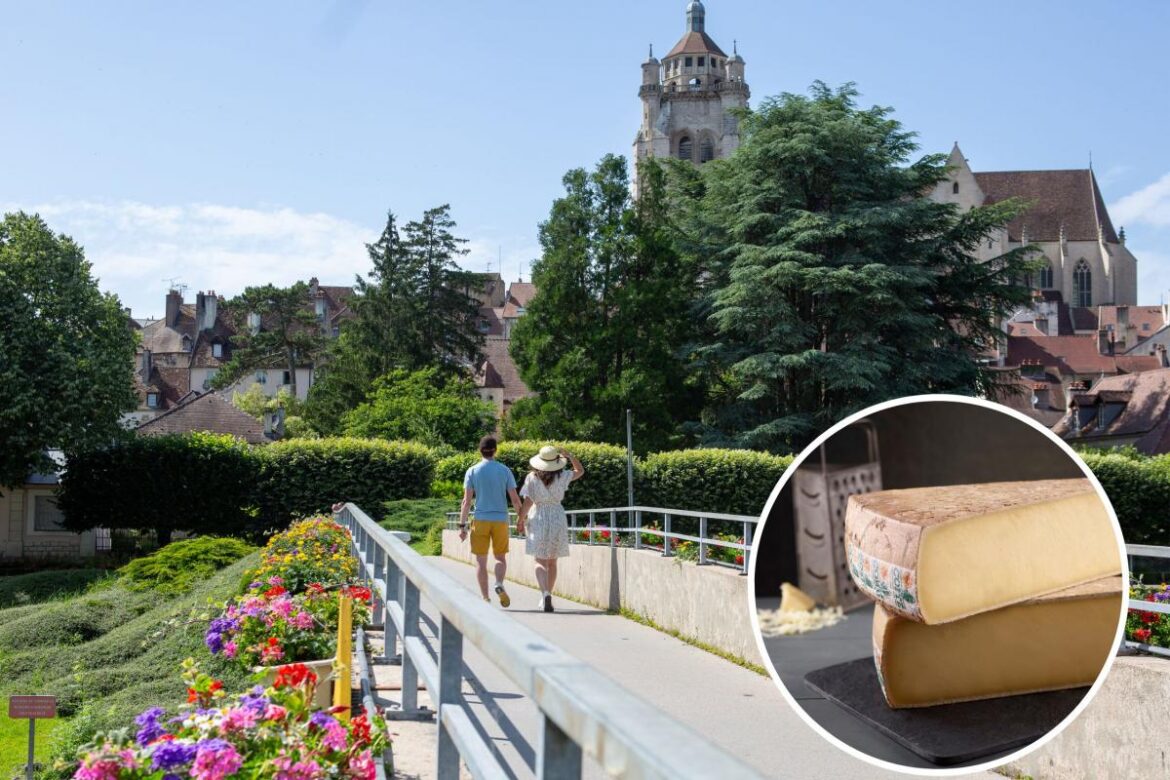In eastern France, on the banks of the Doubs River, lies Dole – a picturesque town of around 23,700 residents and the proud twin town of Northwich.
Located in the French countryside near the Jura Mountains, Dole is where history, culture, and tradition come together – and nowhere is that more evident than in the region’s food.
With its Renaissance architecture, winding canals, and vibrant markets, Dole is considered one of the most charming towns in the area.
Until the late 17th century, it was the capital of the former Franche-Comté province.
The town is also known as the birthplace of Louis Pasteur, the pioneering scientist whose childhood home is now a museum dedicated to his life and work.
But Dole’s identity goes beyond its architectural beauty and history. Its deep connection to the surrounding landscape and rural traditions defines daily life.
In this part of France, food remains closely tied to the seasons, the soil, and the work of local producers.
Dole in France (Image: Jessica Bascou) One of the most iconic examples of this heritage is Comté cheese, made in the Jura Massif region for more than a thousand years.
A cheese that tells a regional story
Comté is still produced in small village dairies known as fruitières, using milk from Montbéliarde and French Simmental cows that graze in open pastures.
The area around Dole supports this tradition with fertile meadows and a strong farming culture.
Comté production involves more than 2,400 family farms and around 140 fruitières, where farmers deliver fresh milk daily.
Comté cheese is produced in the area around Dole (Image: Matt Austin)
Skilled cheesemakers follow time-honoured methods to create large 40kg wheels of Comté aged for several months to a few years.
Each wheel is cared for by expert affineurs who monitor it as it matures, allowing it to develop flavours reflecting the cows’ seasonal diet and local terroir.
This slow, careful process demands patience and precision – values that define life in the Jura region.
While Comté is well known in France and abroad, it remains deeply rooted in the local communities surrounding towns like Dole.
Wheels upon wheels of Comté cheese (Image: Matt Austin)
The region’s approach to food isn’t about trends or luxury – it’s about respecting tradition and making the most of what the land offers.
A town with many layers
Dole’s historic centre is a joy to explore, with narrow lanes, old stone houses, and inviting cafés.
The Collegiate Church of Notre-Dame, a 16th-century Gothic landmark, dominates the skyline.
The Canal des Tanneurs (Image: Théophile Charnier)
The Canal des Tanneurs – named for its past role in the leatherworking trade – runs quietly through town and adds to its charm.
Dole also boasts a lively cultural scene. Weekly markets fill its squares with produce, cheese, wine, and cured meats from nearby farms.
Festivals throughout the year celebrate music, literature, regional foods, and community life, making Dole not just a beautiful place to visit, but a place where local identity is proudly maintained.
A living link between towns
The twinning between Northwich and Dole is more than symbolic – it reflects a shared appreciation for heritage, landscape, and community values.
A drone image of Dole (Image: Jura Drone) For those in Northwich wanting to discover more about their twin town, sampling a piece of Comté cheese is a good place to start.
Within its rich, complex flavour lies a glimpse of Jura life – one shaped by tradition, craftsmanship, and a deep respect for nature and community.

